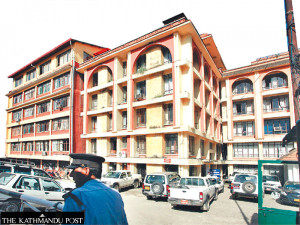Opinion
Don’t over indulge
The price of gold is based less on intrinsic value and more on the beliefs of buyers and sellers
Sarthak Karki
Sometimes a simple question such as one that a child might ask confounds people. One such basic question could be: What is gold essentially?
One could approach this question from different points of view—that of chemistry, economics or sociology. An accomplished chemist such as Professor Andreas Sella, who features in the excellent BBC World Service radio programme titled Elements, would describe gold as a very inert metal which was picked during ancient times as the metal of choice for decorative purposes and value because of its non-reactivity, the right extent of scarcity, relatively lower melting point and distinctive yellow colour.
An economist might approach this question by considering the role of gold in the international monetary system. This approach probably requires a quick review of history. The monetary system of the post-industrial revolution developed world was predominantly based on gold. During this era of ‘classical gold standard’ (1880-1914), nations the fixed value of their currency in terms of gold and stood ready to buy and sell any quantity of gold at that price. This system broke down during the First World War and so did the gold exchange standard. The Bretton Woods System was then introduced in 1945, under which only the US dollar was made convertible into gold at a fixed price while other currencies were fixed in terms of the dollar. This broke down as well in 1971, mainly due to the large balance of payments deficit of the United States which threatened to empty the country’s limited gold reserves. This brings us to the present international monetary system of floating exchange rates which has been operating since 1973. Gold (standard), “the barbarous relic”, to borrow the words used by the great British economist JM Keynes, is no longer formally required in the current system. This is also highlighted by the fact that while the International Monetary Fund initially required member countries to pay 25 percent of their assigned quota in gold, it now requires this payment in Special Drawing Rights or specific foreign currencies.
In short, an economist might rightly point out that the current international monetary system has given gold a snub.
Thorstein Bunde Veblen, the great Norwegian-American economist and sociologist could offer us an interesting perspective on modern demand for gold jewellery. In his most excellent book titled The Theory of the Leisure Class (1899), Veblen observes that upper echelons of society are almost exclusively interested in wasteful enterprises as opposed to industrial enterprises which are useful to the society. The idea is to make their wasteful engagements ‘conspicuous’ often through ‘vicarious consumption’ and the objective is to achieve ‘invidious comparison’ to differentiate oneself from the masses who are compelled to engage in useful drudgery of everyday life. Through Veblenian spectacles, what could be more wasteful and more conspicuous than expensive jewellery made up of gold whose intrinsic value amounts to almost zilch (industrial application of gold is almost zero and gold is no longer a part of the international monetary system)?
Wasteful import?
The import of gold in Nepal is governed by the Work Procedure regarding import and distribution of gold, 2068. The preface of this document describes gold as a ‘luxury item’ and states that the objective of the document is to control excessive import of the metal to protect Nepal’s foreign exchange reserves. Indeed the Work Procedure allows only commercial banks to import gold and limits daily imports to 20 kgs.
Apparently, excessive gold imports are also a nuisance for the Indian government. Raghuram Rajan, the former governor of the Reserve Bank of India, decries the adverse impact of excessive gold imports in India’s current account balance and level of financial intermediation in several places in his insightful book titled I do what I do (2017).
Nepal Foreign Trade Statistics published by Department of Customs states that 5,450kgs of gold was imported into Nepal in the fiscal year (FY) 2073/74 which cost us Rs23.23 billion. What’s more, if the trend of gold imports observed during first seven months of FY 2074/75 continues, gold imports from official channels this fiscal year will swell to 7,029kgs, which will cost the country Rs30.41 billion! Surely, this is a cause of concern for the economy considering that our balance of payments is currently in negative territory.
A good investment?
It is important for a consumer to be clear about whether he/she views gold jewellery as an investment (like stocks or bonds) or as a luxurious fashion commodity (like designer clothes). Most gold enthusiasts seem to view gold jewellery as both.
I conducted research to test whether facts fit well with this theory.
This involved documenting data from 25 gold jewellery receipts and doing some math.
The major results are thus: average monetary loss in gold jewellery immediately after purchase is 17.74 percent of the purchase price. This involves mainly two kinds of losses, wastage or Jarti (14.11 percent), and making charge (3.88 percent). Actual monetary loss depends on the kind of jewellery under consideration—the general rule being, the more complicated the design, the greater the loss. For instance, the Beruwa ring documented the least percentage of loss (4.20 percent) while the highest percentage of loss (49.93 percent) belonged to the popular Tilhari. Of course, when one sells gold jewellery for cash, the gold dealer also charges a commission. My study finds this commission to range from Rs50 per gram to 10 percent of purchase price. Thus, when one completes the investment cycle, monetary loss on gold jewellery can go up to 28 percent (at constant gold price). Naturally, the loss would be even higher if one goes to a different jeweller to sell or if one loses the purchase receipt.
Therefore, when someone purchases gold jewellery and thinks of it as an investment, the person is essentially counting on the price of the metal going up. And it needs to go up by up to 28 percent just to break even. However, since gold has no intrinsic value, one could argue that increase in its price is pretty much based on the irrational beliefs of buyers and sellers. So, is it reasonable to consider gold jewellery as an investment? The general public should consider all these facts when they think about buying gold jewellery.
Karki is an Assistant Director at Nepal Rastra Bank




 19.71°C Kathmandu
19.71°C Kathmandu












